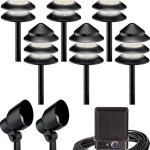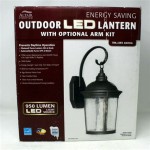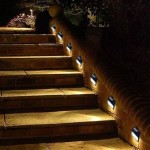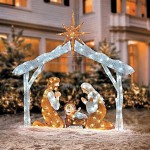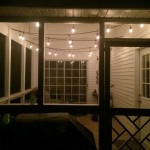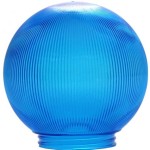How Many Lumens Do I Need For Outdoor Patio Lighting?
Determining the appropriate amount of light for an outdoor patio involves several considerations, with lumens serving as a crucial measurement. Lumens quantify the total amount of visible light emitted by a light source. Understanding the factors influencing lumen requirements for patio lighting ensures a functional and aesthetically pleasing outdoor space. This article explores the key aspects of estimating the necessary lumens to illuminate a patio effectively.
The primary goal of patio lighting is to create a welcoming and functional area for relaxation, dining, and entertainment. The required level of illumination depends on the intended use of the patio, its size, the surrounding environment, and personal preferences. Overly bright lighting can be uncomfortable and detract from the ambiance, while insufficient lighting can compromise safety and usability.
Understanding Lumens and Foot-Candles
Lumens represent the total light output from a source, irrespective of direction. Foot-candles, on the other hand, measure light intensity on a surface – specifically, the amount of light falling on one square foot. The relationship between lumens and foot-candles is influenced by distance and the angle of the light source. A single lumen concentrated on a small area delivers a higher foot-candle measurement than that same lumen spread across a wider area. Therefore, when estimating lumens for patio lighting, it's important to consider the area being illuminated and the desired foot-candle level.
As a general guideline, patios used primarily for relaxation and casual conversation may require lower foot-candle levels (around 5-10 foot-candles), while patios used for dining or grilling will benefit from higher foot-candle levels (15-20 foot-candles). These are starting points and personal preferences play a significant role in the final determination.
Furthermore, the type of light fixture influences the distribution of light. Downlights, for example, concentrate light downwards, delivering higher foot-candle levels directly beneath the fixture. String lights and lanterns distribute light more diffusely, resulting in lower foot-candle levels over a wider area. The choice of fixture should align with the desired ambiance and the intended function of the patio area.
Factors Influencing Patio Lighting Lumen Requirements
Several factors contribute to determining the optimal number of lumens for patio lighting. These include the size of the patio, the desired level of brightness, the color of surrounding surfaces, the presence of ambient light, and the types of activities planned for the space.
Patio Size and Layout: Larger patios naturally require more lumens to achieve adequate illumination. Consider dividing the patio into zones, each with its own lighting requirements. For example, a dining area may need brighter lighting than a lounge area. The layout also impacts lighting placement. L-shaped patios or areas with obstructions may require additional fixtures to eliminate shadows and ensure even light distribution.
Desired Brightness Level: The desired ambiance significantly impacts lumen requirements. A romantic or relaxed atmosphere may require lower light levels than a lively entertainment space. Different individuals have varying sensitivities to light, so consider the preferences of those who will be using the patio regularly. Dimmer switches offer a versatile solution, allowing users to adjust the brightness level according to their needs and preferences.
Surface Reflectivity: The color and texture of surrounding surfaces influence the perceived brightness of the lighting. Light-colored surfaces reflect more light, reducing the required lumen output. Dark-colored surfaces absorb more light, necessitating higher lumen output to achieve the same level of illumination. Hardscaping materials like concrete, pavers, and wood also impact light reflection. Considering these factors when selecting lighting fixtures ensures optimal illumination without excessive brightness.
Ambient Light Levels: Existing ambient light from streetlights, neighboring properties, or the moon will affect the perceived brightness of patio lighting. If the patio is located in an area with significant ambient light, lower lumen outputs may suffice. Conversely, patios in darker areas will require higher lumen outputs to achieve adequate illumination. Conducting a nighttime assessment of ambient light levels helps refine lumen estimations.
Planned Activities: The intended use of the patio determines the necessary level of illumination. Patios used for dining require sufficient light to see food and beverages clearly. Outdoor kitchens need brighter task lighting for safe food preparation. Relaxation areas benefit from softer, ambient lighting. Choosing lighting fixtures appropriate for each activity ensures functionality and enjoyment of the outdoor space.
Estimating Lumens for Different Patio Zones
Dividing the patio into distinct zones allows for targeted lighting solutions, optimizing both functionality and ambiance. Each zone should be assessed individually based on its intended purpose and the factors previously discussed.
Dining Areas: Dining areas typically require 15-20 foot-candles of light. To determine the necessary lumens, estimate the square footage of the dining area and multiply it by the desired foot-candle level. For example, a 100 square foot dining area would require 1500-2000 lumens. This total can be achieved using a combination of overhead lighting, table lamps, and decorative string lights.
Lounge Areas: Lounge areas benefit from softer, more ambient lighting. Aim for 5-10 foot-candles of light. Using the same calculation method, a 100 square foot lounge area would require 500-1000 lumens. This can be achieved with low-level path lighting, lanterns, and strategically placed spotlights.
Pathways and Steps: Safety is paramount when illuminating pathways and steps. Aim for 2-5 foot-candles of light to ensure clear visibility. Path lighting fixtures should be spaced appropriately to provide consistent illumination without creating glare. Consider using motion sensor lights for added security and energy efficiency.
Outdoor Kitchens: Outdoor kitchens require bright, focused lighting for task performance. Aim for 30-40 foot-candles of light over cooking and preparation areas. This can be achieved with under-cabinet lighting, spotlights, and overhead fixtures. Ensure that lighting fixtures are weather-resistant and suitable for outdoor use.
In summary, determining the required lumens for patio lighting involves a multi-faceted approach. By considering the size of the patio, desired brightness levels, surface reflectivity, ambient light levels, and planned activities, it is possible to estimate the necessary lumens for each zone. Utilizing these guidelines, combined with personal preferences, leads to a well-lit and enjoyable outdoor space.

How Many Lumens Outdoor Landscape Lights Need To Work Well

How Many Lumens Do You Need For Outdoor Lighting

How Many Lumens Do You Need For Outdoor Lighting

How Many Lumens Do I Need For Outdoor Lighting Easy Guide

How Many Lumens Do I Need For Outdoor Lighting 2024 Guide

How Many Lumens Do We Need In The Yard

How Many Lumens Are Needed For Outdoor Lighting The Home Depot

How Many Lumens Are Needed For Outdoor Lighting The Home Depot

How Many Lumens Do I Need For Outdoor Lighting

How Many Lumens Do You Need For Outdoor Lighting Villaneri
Related Posts
